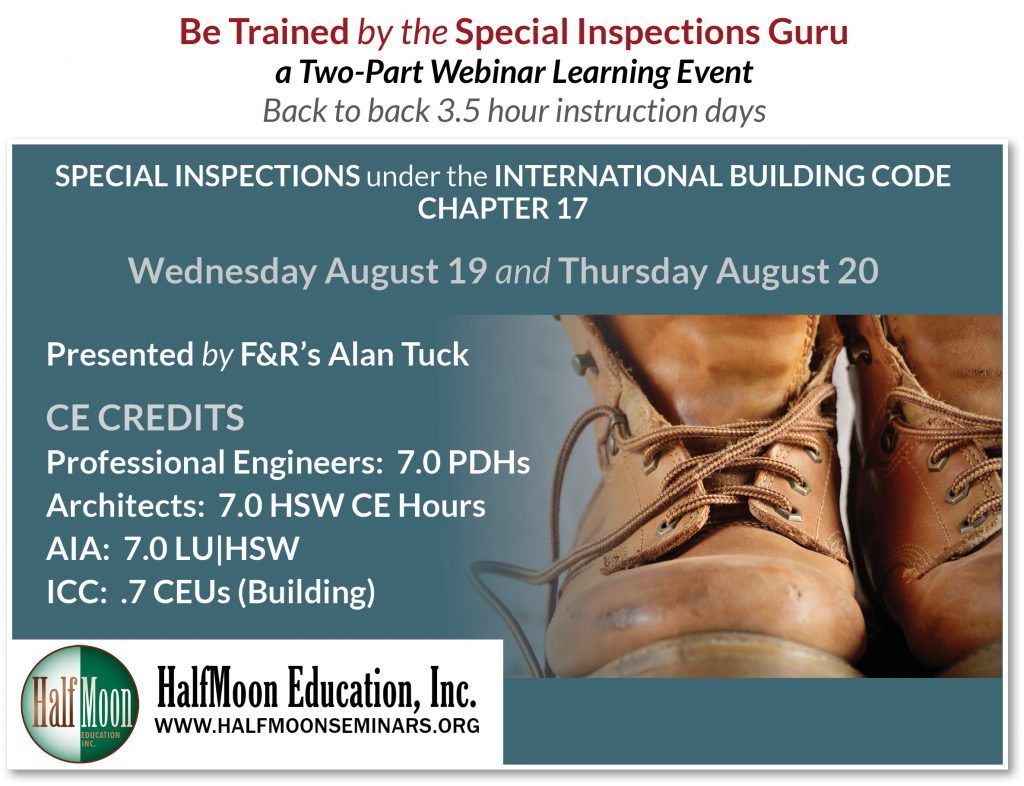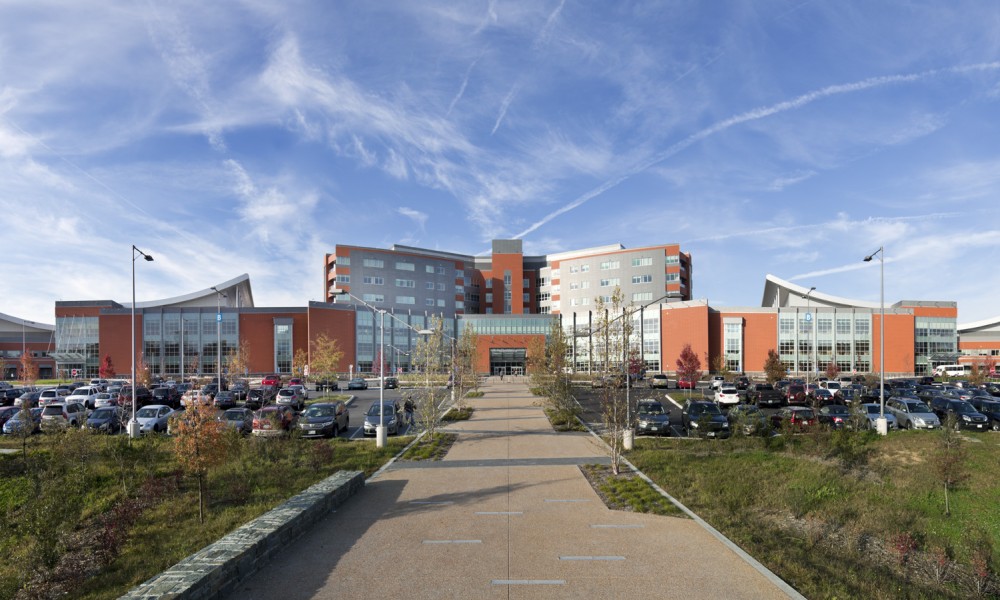
IBC Table 1604.5 risk category
Understanding HOW It Works…An Enthusiastically Dry Discussion
The arcane Table 1604.5, “Risk Category of Buildings and Other Structures” is located in IBC, chapter 16, section 1604.5 and has been located there since the inception of the first International Building Code (IBC) in the year 2000. A copy of the table can be viewed on page 2. Admittedly, it can be a little tough to take in.
Risk categories are assigned to buildings to account for consequences and risks to human life (building occupants) in the event of a building failure. The intent is to assign higher risk categories, and hence higher design criteria, to buildings or structures that, if they experience a failure, would exhibit the availability of essential community services necessary to cope with an emergency situation therefore, have grave consequences to either the building occupants or the population around the building.
Section 1604.5 of the IBC building code requires risk categories to be assigned to every building and structure based on descriptions in the “nature of occupancy” column in Table 1604.5. The risk category serves as a threshold for a variety of code provisions related to earthquake, flood, snow, wind loads and even the magnitude of special inspections. Particularly noteworthy are the importance factors that are used in the calculation of design, earthquake, snow and wind loads. The value of the importance factor generally increases with the importance of the facility. Structures assigned greater importance factors must be designed for larger forces. The result is a more robust structure that would be less likely to sustain damage under the same conditions than a structure with a lower importance factor. The intent is to enhance a structure’s performance based on its use or need to remain in operation during and after a disaster. The impact of a higher risk category classification is not limited to increasing the design loads. Compared to Risk Category I, II or III for instance, a Risk Category IV classification can lead to a higher seismic design category classification that can, in turn, require more stringent seismic detailing and limitations on the seismic-force-resisting system. This can also affect seismic design requirements for architectural, mechanical and electrical components. Got all that?
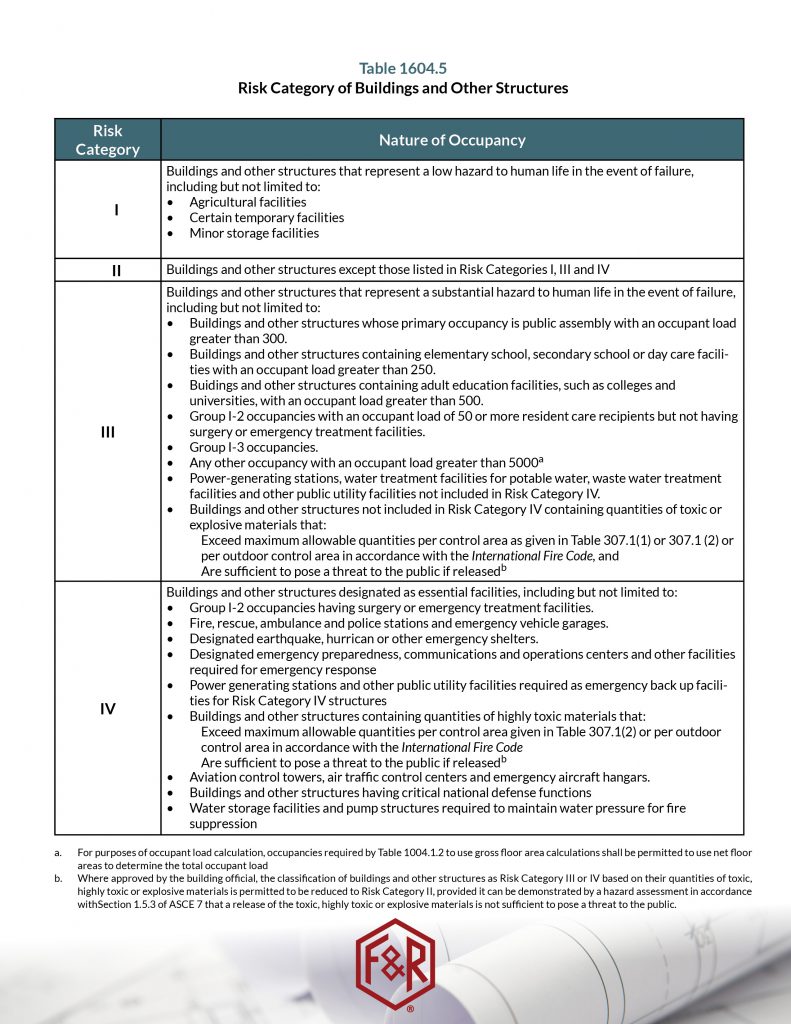
Risk Category IV: These are buildings that are considered to be essential in that their continuous use is needed, particularly in response to disasters. Hospitals, fire stations, police stations and emergency vehicle garages must remain operational during and after major disaster type events. The phrase “designated as essential facilities” refers to designation by the building official that certain facilities are required for emergency response or disaster recovery. This concept provides jurisdictions the latitude to identify specific facilities that should be considered essential in responding to various types of emergencies.
Risk Category III: These buildings include those occupancies that have relatively large numbers of occupants because of the overall size of the building. They also include uses that pose an elevated life-safety hazard to the occupants such as public assembly, schools or colleges. In addition, Risk Category III includes uses where the occupants ability to respond to an emergency is restricted such as jails or otherwise impaired such as nursing homes which house patients who require skilled nursing care. Risk category III buildings are identified as nonessential by the code and are generally classified (within Risk Category III) based on number of occupants and the use classification according to IBC chapter 3, “Occupancy Classification and Use”.
Risk Category II: These buildings represent a lesser hazard to life because of fewer building occupants and smaller building size compared to those that are considered Risk Category III. Since Risk Categories III and IV represent buildings with higher risk or essential facilities on a relative scale, Risk Category II can be thought of as a “standard occupancy” building as evidenced by importance factors for earthquake, snow and wind that are all equal to 1. Most buildings and structures are considered to be Risk Category II. The buildings in Risk Category II are identified as nonessential by the code and are generally classified as category II buildings because they are not essential and therefore not classified as category IV buildings in tandem with the fact that they do not meet any of the criteria established for category III buildings. In other words, a building is identified as a Risk Category II building when it does not meet any of the code criteria for a category III building or a category IV building.

Risk Category I: The buildings in this risk category group are buildings that exhibit the lowest hazard to life since they have few or no human occupants or are temporary, thus creating considerably less exposure to the hazards of earthquakes, floods, snow and wind than that of a permanent structure. This category includes agricultural facilities, temporary facilities and “minor storage facilities” but the code does not provide an explanation of which storage facilities could be considered minor.
During any discussion of risk categories and the various levels of the different risk categories, it is very important to understand the MEANING of essential facilities and nonessential facilities. The IBC code defines essential facilities as “buildings and other structures that are intended to remain operational in the event of extreme environmental loading from flood, wind, snow or earthquakes”. Nonessential facilities, then, are any buildings that are not classified as essential.
Multiple Use Occupancies: Where a building or structure is occupied by two or more occupancies not included in the same risk category, it shall be assigned the classification of the highest risk category corresponding to the various occupancies. Where buildings or structures have two or more portions that are structurally separated, each portion shall be separately classified. Where a separated portion of a building or structure provides required access to, required egress from or shares life-safety components with another portion having a higher risk category, both portions shall be assigned to the higher risk category.
Section 1604.5 Risk Category. Each building or structure shall be assigned a risk category in accordance with Table 1604.5. Where a reference standard specifies an occupancy category, the risk category shall not be taken as lower than the occupancy category specified therein (IBC Table 1604.5). Where a referenced standard that the assignment of a risk category be in accordance with ASCE 7, Table 1.5-1, Table 1604.5 shall be used in lieu of ASCE 7, Table 1.5-1.
Section 1604.5 Exception: The assignment of buildings and structures to Tsunami Risk Categories III and IV is permitted to be in accordance with Section 6.4 of ASCE 7.
The code and Table 1604.5 establishes special provisions that allow Risk Category IV to include structures that would not otherwise be included in this risk category. Designated emergency shelters and designated emergency response facilities incorporated into secondary schools with certain occupancy loads (275) would typically be considered a Risk Category IV building rather than a category III building.
Facilities supplying emergency backup power for Risk Category IV structures would, themselves, be designated as a Risk Category IV building rather than a Risk Category III facility. Structures with quantities of highly toxic materials in excess of the quantities permitted for a control area in Table 307.1(2), “Occupancy Classification and Use Chapter” would also be designated as a Risk Category IV facility if the conditions comply with Table 307.1(2) criteria in chapter 3 of the IBC code.
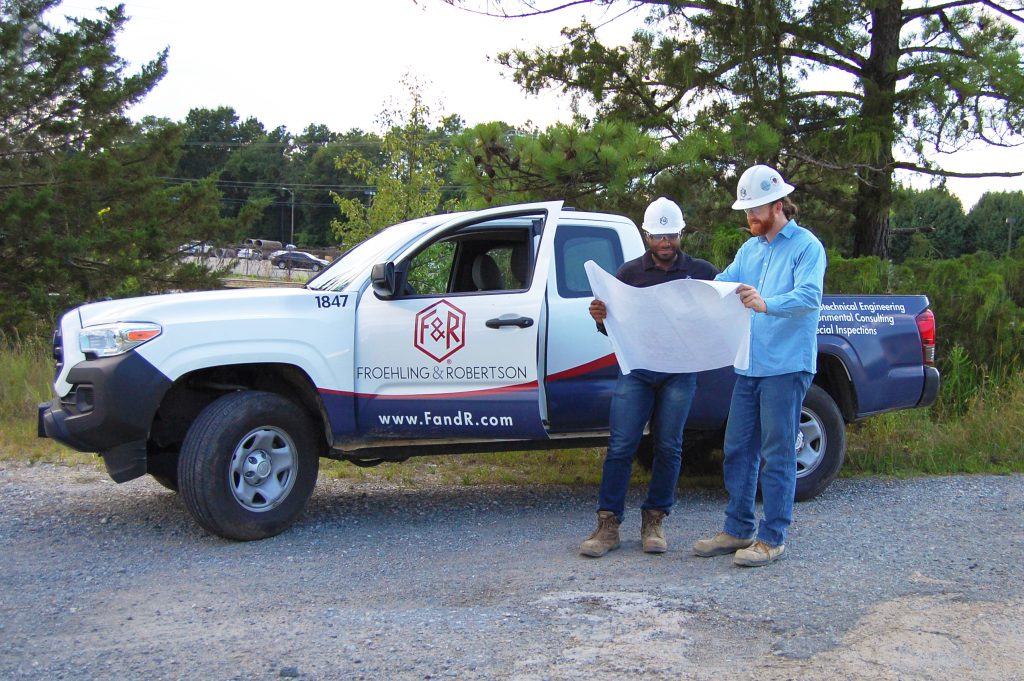
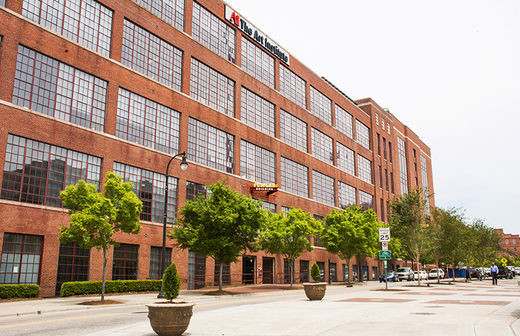
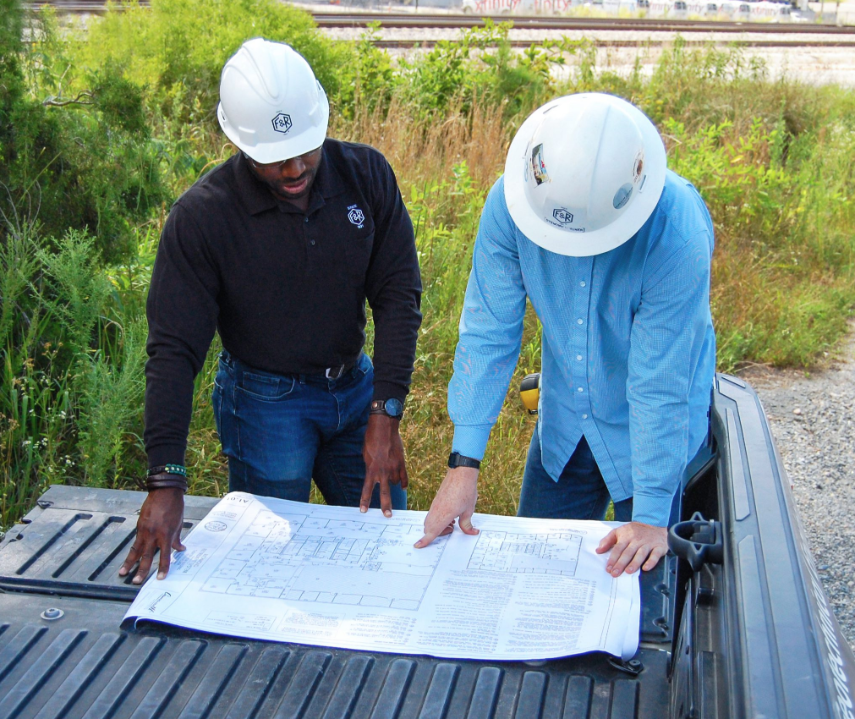
Is the special inspections program for construction projects INFLUENCED by IBC Table 1604.5? The answer is yes, of course, and there are times when Table 1604.5 will even DETERMINE if portions of your construction project even requires special inspections in the field. An example of this is found in section 1705.4.1, chapter 17 of the IBC code which states “Special inspections and tests for empirically designed masonry (such as masonry veneer) where the structure is classified as Risk Category IV (essential facility) shall be performed in accordance with TMS 402, Level B quality assurance”. In this example the words quality assurance are synonymous with the term special inspections. If this (brick veneer) project were NOT classified as Risk Category IV according to Table 1604.5, then NO special inspections would be required in the field. This is because brick veneer construction does not require ANY field special inspections if the building is classified as a Risk Category Level 1, 2 or 3. (Level IV however requires Level B masonry special inspections). It is, generally, true that Risk Category IV projects will not only require MORE special inspections on the project than category II and III projects but they will also require MORE CONTINUOUS special inspections. This is primarily because Risk Category IV projects have greater importance factors, more robust structures and more complicated design criteria.
But Wait, We Have a Lot More to Say!
CODE issues got you cracking up? For a complete picture of the Code and how it relates to Special Inspections, F&R would love to provide an AIA accredited Lunch & Learn presentation to the professionals at your firm. A catalog of available presentations can be downloaded here. Contact Alan Tuck for more details at: atuck@fandr.com


